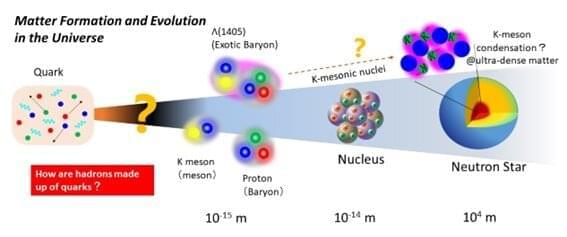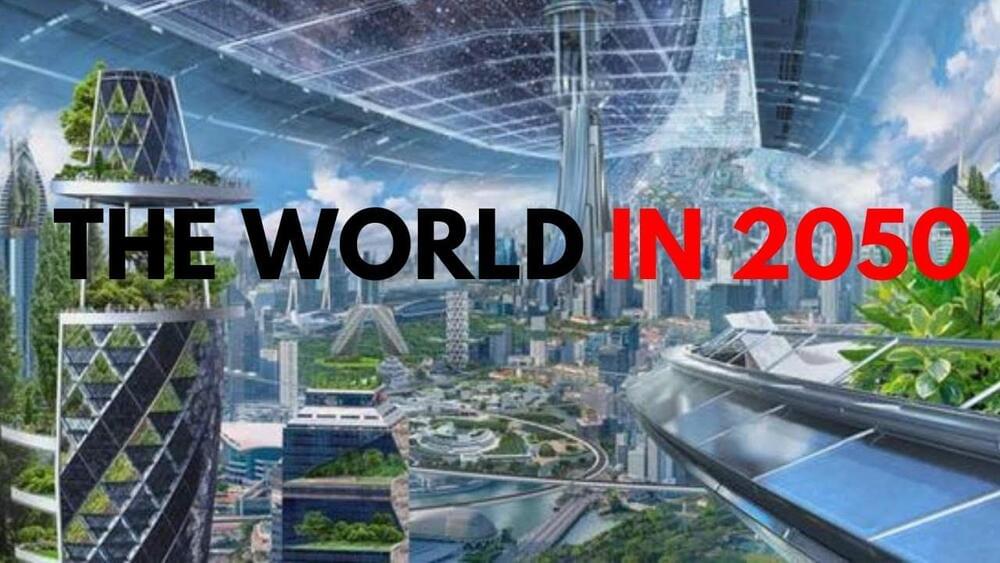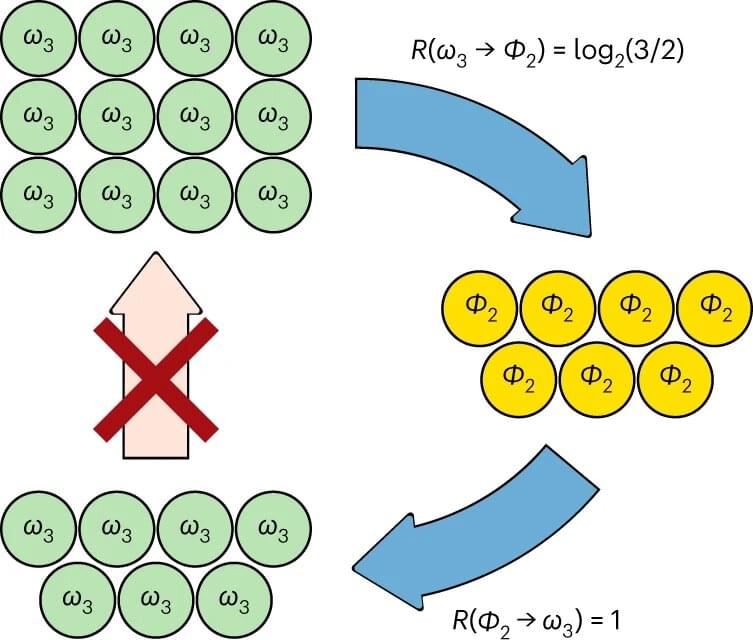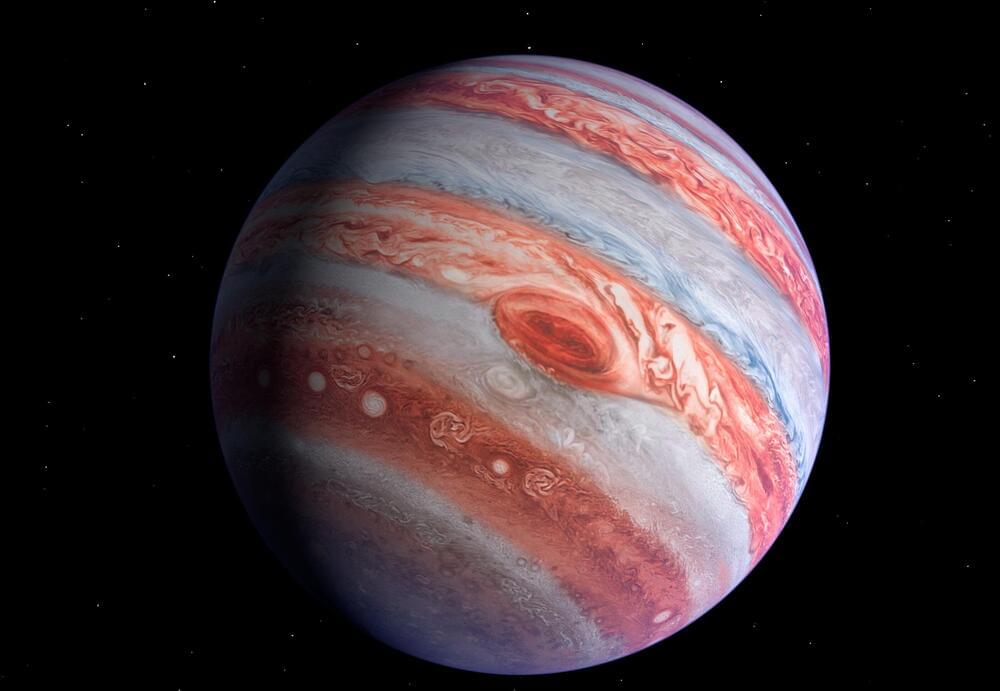The new AI language processing tool has been trending since its launch late last year, but how do you use it and what for?
Page 2617
Jan 27, 2023
Particle accelerator experiment creates an exotic, highly unstable particle and measures its mass
Posted by Dan Breeden in categories: particle physics, space
The standard model of particle physics tells us that most particles we observe are made up of combinations of just six types of fundamental entities called quarks. However, there are still many mysteries, one of which is an exotic, but very short-lived, Lambda resonance known as Λ(1405). For a long time, it was thought to be a particular excited state of three quarks—up, down, and strange—and understanding its internal structure may help us learn more about the extremely dense matter that exists in neutron stars.
Investigators from Osaka University were part of a team that has now succeeded in synthesizing Λ(1405) for the first time by combining a K- meson and a proton and determining its complex mass (mass and width). The K− meson is a negatively charged particle containing a strange quark and an up antiquark. The much more familiar proton that makes up the matter that we are used to has two up quarks and a down quark. The researchers showed that Λ(1405) is best thought of as a temporary bound state of the K- meson and the proton, as opposed to a three-quark excited state.
In their study published recently in Physics Letters B, the group describes the experiment they carried out at the J-PARC accelerator. K− mesons were shot at a deuterium target, each of which had one proton and one neutron. In a successful reaction, a K− meson kicked out the neutron, and then merged with the proton to produce the desired Λ(1405).
Jan 27, 2023
Future of the Metaverse (2030 — 10,000 A.D.+)
Posted by Dan Breeden in categories: biological, mathematics, Ray Kurzweil, robotics/AI, singularity, virtual reality

This video covers the timelapse of metaverse technologies from 2030 to 3000+. Watch this next video about the Future of Virtual Reality (2030 – 3000+): https://bit.ly/3zfjybO.
► Support This Channel: https://www.patreon.com/futurebusinesstech.
► Udacity: Up To 75% Off All Courses (Biggest Discount Ever): https://bit.ly/3j9pIRZ
► Brilliant: Learn Science And Math Interactively (20% Off): https://bit.ly/3HAznLL
► Jasper AI: Write 5x Faster With Artificial Intelligence: https://bit.ly/3MIPSYp.
SOURCES:
• https://www.futuretimeline.net.
• The Singularity Is Near: When Humans Transcend Biology (Ray Kurzweil): https://amzn.to/3ftOhXI
Continue reading “Future of the Metaverse (2030 — 10,000 A.D.+)” »
Jan 27, 2023
The World In 2050 | A Look Into The Future Technology Events That Will Happen By 2050
Posted by Dan Breeden in category: futurism
Jan 27, 2023
No ‘second law of entanglement’ after all, claims study
Posted by Dan Breeden in categories: economics, energy, law, quantum physics
The second law of thermodynamics is often considered to be one of only a few physical laws that is absolutely and unquestionably true. The law states that the amount of ‘entropy’—a physical property—of any closed system can never decrease. It adds an ‘arrow of time’ to everyday occurrences, determining which processes are reversible and which are not. It explains why an ice cube placed on a hot stove will always melt, and why compressed gas will always fly out of its container (and never back in) when a valve is opened to the atmosphere.
Only states of equal entropy and energy can be reversibly converted from one to the other. This reversibility condition led to the discovery of thermodynamic processes such as the (idealized) Carnot cycle, which poses an upper limit to how efficiently one can convert heat into work, or the other way around, by cycling a closed system through different temperatures and pressures. Our understanding of this process underpinned the rapid economic development during the Western Industrial Revolution.
The beauty of the second law of thermodynamics is its applicability to any macroscopic system, regardless of the microscopic details. In quantum systems, one of these details may be entanglement: a quantum connection that makes separated components of the system share properties. Intriguingly, quantum entanglement shares many profound similarities with thermodynamics, even though quantum systems are mostly studied in the microscopic regime.
Jan 27, 2023
James Webb Space Telescope suffers 2nd instrument glitch
Posted by Dan Breeden in category: space
Every spacecraft glitches occasionally, and even the most powerful space telescope ever launched isn’t immune.
The James Webb Space Telescope (JWST or Webb) launched in December 2021 and has been conducting science observations since July 2022, stunning the world with its gorgeous images and revolutionary data. But on Jan. 15, JWST’s Near Infrared Imager and Slitless Spectrograph (NIRISS) instrument “experienced a communications delay within the instrument, causing its flight software to time out,” according to a Jan. 24 statement (opens in new tab) from NASA. NIRISS can’t currently be used for science, the statement noted.
Jan 27, 2023
Meteorites reveal likely origin of Earth’s volatile chemicals
Posted by Dan Breeden in categories: alien life, chemistry
Meteorites have told Imperial researchers the likely far-flung origin of Earth’s volatile chemicals, some of which form the building blocks of life.
They found that around half the Earth’s inventory of the volatile element zinc came from asteroids originating in the outer solar system—the part beyond the asteroid belt that includes the planets Jupiter, Saturn, and Uranus. This material is also expected to have supplied other important volatiles such as water.
Volatiles are elements or compounds that change from solid or liquid state into vapor at relatively low temperatures. They include the six most common elements found in living organisms, as well as water. As such, the addition of this material will have been important for the emergence of life on Earth.
Jan 27, 2023
Scientists find a drug that treats obesity, fatty liver, heart disease
Posted by Paul Battista in categories: biotech/medical, food, neuroscience
According to the U.S. Centers for Disease Control and Prevention, more than 40% of people living in the U.S. are obese; and 43% of American women over the age of 60—long past menopause—are considered obese. A recent Johns Hopkins study showed that a drug first developed to treat Alzheimer’s disease, schizophrenia, and sickle cell disease could treat obesity and fatty liver and improve heart function—without changes in food intake or daily activity.
Jan 27, 2023
Responsible AI has a burnout problem
Posted by Kelvin Dafiaghor in category: robotics/AI
Companies say they want ethical AI. But those working in the field say that ambition comes at their expense.
Jan 27, 2023
Cybernetic Theory: The Code of Reality & Our Future as Cybergods | Talk
Posted by Alex Vikoulov in categories: cosmology, existential risks, physics, robotics/AI, singularity, transhumanism, virtual reality

CYBERNETIC THEORY: THE CODE OF REALITY & OUR FUTURE AS CYBERGODS: presenting my published works in a recent talk. Topics include evolutionary cybernetics, computational physics, consciousness, philosophy of mind, cybernetic theory, Omega Point cosmology, physics of time, simulation theory, Global Mind, AGI, VR, Metaverse, Cybernetic Singularity, transhumanism, posthumanism, cybernetic immortality, synthetic telepathy, mind-uploading, neurotechnologies, Fermi Paradox, Dark Matter, Dark Energy, the Argument for Cybertheism, and more.
The main 45-minute slide presentation is followed by a 15-minute Q&A session. This presentation is in Russian with slides and subtitles in English.
Continue reading “Cybernetic Theory: The Code of Reality & Our Future as Cybergods | Talk” »
















